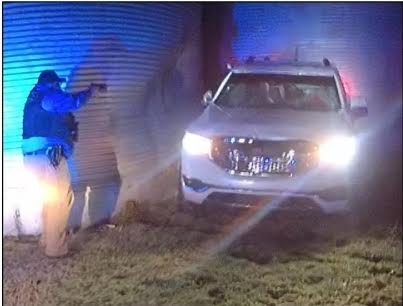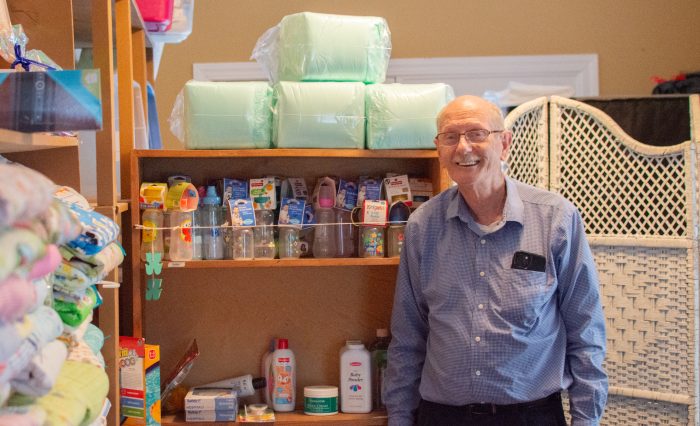Ballpark firm has success in past
Published 12:00 am Sunday, August 7, 2005
Mandalay Baseball Properties, the company that asked Bowling Green city commissioners Tuesday for permission to study building a ballpark and other projects downtown, has been an excellent partner for Dayton, Ohio, the city it has played ball with the longest, according to the overseer of Dayton’s redevelopment.
“I would say our relationship with Mandalay has been extremely positive,” said Maureen Pero, president of the Downtown Dayton Partnership, a private nonprofit group similar in function to the Downtown Redevelopment Authority in Bowling Green.
Trending
Mandalay arrived with a stadium deal six years ago, and Dayton decided to use it as part of an overall riverfront redevelopment strategy, she said.
“Our stadium is located in the core of our downtown,” Pero said.
The Dayton Dragons, single-A affiliate of the Cincinnati Reds, began playing in 2000 in a 7,000-seat stadium with 30 luxury suites, premium- and club-level seating, and an upper seating deck.
The company did an “excellent job,” and the Dragons now hold minor-league attendance records, Pero said.
“We’ve had six consecutive sellout seasons,” she said. “All seats have been sold out before the doors opened.”
The Dragons have had good years and bad, but even losing seasons haven’t affected attendance, Pero said.
Trending
“It’s really just about going and having a great experience, a family entertainment experience,” she said.
Rich Neumann, Mandalay’s vice president for development, asked Bowling Green commissioners this week for an exclusive deal to study the feasibility of building a 4,000-seat minor-league stadium on a downtown block, and orchestrating new commercial and residential development on five nearby blocks.
The study would take the rest of the year, at no expense to the city, and the proposed agreement for it would give Mandalay the chance to match any offer from another company in that time.
While commissioners heard and informally approved of Mandalay’s proposal Tuesday, since it wasn’t on the agenda no official action was taken, Mayor Elaine Walker said.
It should appear on the next commission agenda, and if approved will be signed then, she said.
Mandalay has “great interest” in Bowling Green, but won’t enter a deal unless it appears to be a safe investment, company spokesman Kevin Mortesen said Friday.
“Obviously, they’ve seen some things in Bowling Green that they like,” he said.
Details of Mandalay’s study haven’t been settled, but will undoubtedly include a look at previous surveys by the city and associated groups on what downtown needs are, what level of involvement and responsibility Mandalay should assume for connected redevelopment projects, and the chances of acquiring a team franchise in an appropriate league, Mortesen said.
The company is researching projects in several places, but has no ongoing construction projects, he said.
“We’re looking at a bunch of different things,” Mortesen said. “They’re not actively developing a stadium as we speak.”
“The company is absolutely interested in continuing to develop, acquire, etc., minor-league franchises in the right places,” Mortesen said.
Mandalay Baseball Properties now owns the Dragons; the Las Vegas 51s, triple-A affiliate of the Los Angeles Dodgers; the Frisco (Texas) RoughRiders, a double-A joint venture between the Texas Rangers and Southwest Sports Group; the Erie (Pa.) SeaWolves, double-A affiliate of the Detroit Tigers; and Hagerstown (Md.) Suns, single-A affiliate of the San Francisco Giants.
Mandalay’s involvement in Dayton is the company’s longest association with team and stadium construction and management, Mortesen said.
Mandalay Baseball Properties was founded in 1994, an outgrowth of the Hollywood partnership of Peter Guber and Paul Schaeffer. In 1997, the company joined with Hank and Ken Stickney, who owned three minor-league baseball teams.
After seeing the success Dayton, Ohio, and Frisco, Texas, had with redevelopment surrounding their ballparks, the company formed a partnership recently with Earvin “Magic” Johnson’s development company called Johnson-Mandalay Development, Mortesen said.
It aims to provide total redevelopment packages in “one-stop shopping” for cities such as Bowling Green, he said.
Dayton’s ballpark deal with Mandalay was a stand-alone, counting on independent redevelopment to improve the surrounding area.
It became part of a larger-scale entertainment complex that brings 600,000 people downtown annually, Pero said.
A major performing arts center opened nearby in 2003, and a $30 million public recreation area is now there too, she said.
“All three of those major projects were done within the same couple of years,” Pero said.
The city has seen a new corporate headquarters, offices, housing and restaurants spring up around the ballpark, she said. The stadium has probably not been directly responsible for much of that redevelopment, but definitely encouraged more investment in the area, Pero said. Estimates of redevelopment investment so far run as high as $500 million.
The Southern Kentucky Performing Arts Center recently sealed a deal to eventually locate next to Bowling Green’s proposed ballpark, with the city’s help. The city has bought most of the land for Circus Square, a one-block park planned across College Street from SKyPAC, and tentative plans envision commercial and residential development packages on five other blocks in the area.
Dayton’s arts center cost $135 million, Pero said, several times the projected price for SKyPAC – but it incorporates high-rise condominiums and commercial space, similar to the redevelopment Bowling Green anticipates will be separate from SKyPAC but on adjacent blocks.
Day-to-day management of the park has been “top-notch,” she said.
“I would say that’s the key to this,” Pero said. “You have to have a management company that knows what they’re doing.”
Mandalay owns the team, but had no part in the surrounding redevelopment, Pero said.
The ballfield’s site is owned by the city, but Mandalay built the stadium and holds a long-term lease, she said. Should the lease expire, Pero believes the building’s ownership would revert to the city.
The idea of building a ballpark in Bowling Green was first aired in February 2004, and a committee called “Play Ball! ’05” formed to explore and promote it.
The ballpark and other redevelopment – offices, commercial areas, homes and perhaps a hotel – would be built on six of the eight blocks between Sixth and Eighth avenues and Chestnut and Kentucky streets. A park called Circus Square and the Southern Kentucky Performing Arts Center would occupy the other two blocks.
Rick Kelley, chairman of Play Ball! ’05, the volunteer group promoting the ballpark locally, has estimated the total cost of the project at $60 million (excluding Circus Square and SKyPAC), with land, infrastructure and construction of the ballpark itself making up a third of that.
In early 2005, the Kentucky General Assembly allowed the creation of an incremental tax district to fund the field and adjacent redevelopment, tossing the next move back to city government.
Within the tax increment financing district, a developer for the ballpark and five other blocks would get 80 percent of any increase in revenue from state sales, property and hotel-room taxes within that area, not to exceed more than 50 percent of the cost of the project over a 20-year period. That revenue would go toward redeveloping the entire six-block area, not just building the ballpark.
The most likely fit for Bowling Green’s market is a double-A team, which would cost about $10 million to buy, Neumann said.
If no Mandalay team comes to Bowling Green, the company might buy a new one, or help the city find one, he said.
The company would probably build a local ballpark, but not own it, he said. Operating expenses for a ballpark could run as high as $1 million annually, Neumann said.
Meanwhile, a similar-sized Kentucky city is still seeking a baseball team of its own, but on a smaller scale than Bowling Green.
Owensboro and Daviess County decided July 29 to pay for part of a feasibility study on a new downtown arena and nearby minor-league baseball stadium.
A “Bring Back Baseball” committee has been working for more than four years to promote the idea, said committee member Rodney Berry. The committee has pledged to raise $10,000 to help pay for the study, for which the market data would be relevant to both the stadium and arena projects, he said.
No contract has yet been signed for the study, so neither the timeframe nor exact scope of the work has been settled, Berry said.
“But it’s essentially to determine whether or not the project is financially feasible,” he said.
Owensboro would like to build a 4,000-capacity stadium that could host concerts, exhibitions and festivals as well as baseball, Berry said.
In examining the idea early on, the committee “couldn’t make the numbers work” to support a minor-league team – affiliated with a major-league club – in Owensboro, he said.
“I guess we’re not thinking as ambitiously as Bowling Green,” Berry said.
So Owensboro is looking at the chance to get an independent team associated with the Frontier League, which includes teams now in Evansville, Ind., and Florence, he said.
“That league is expanding in the next few years from 12 teams to 16 teams,” Berry said.
Bring Back Baseball hasn’t had any discussions with Mandalay, he said.
“We’re approaching it a little bit differently,” Berry said.
Owensboro’s committee is proposing that a local nonprofit entity own the stadium and team, he said.
“We very much want to have community ownership and control of the team,” Berry said.






